- Benefits of Bag-Grown Tomato Seedlings
- Choosing the Right Bag for Your Tomato Seedlings
- 1. Size
- 2. Material
- 3. Durability
- 4. Handles
- 5. Reusability
- Preparing the Bag for Planting Tomato Seedlings
- Step 1: Choose a Suitable Bag
- Step 2: Clean and Sanitize the Bag
- Step 3: Create Drainage Holes
- Step 4: Fill the Bag with Potting Soil
- Step 5: Add Organic Fertilizer
- Step 6: Moisten the Soil
- Step 7: Arrange and Plant the Tomato Seedlings
- Planting Tomato Seedlings in the Bag
- Materials Needed:
- Step 1: Prepare the Bag
- Step 2: Fill the Bag with Soil
- Step 3: Plant the Tomato Seedlings
- Step 4: Fertilize
- Step 5: Water
- Step 6: Care and Maintenance
- Step 7: Harvest
- Caring for Bag-Grown Tomato Seedlings
- 1. Watering
- 2. Fertilizing
- 3. Staking
- 4. Pruning
- 5. Mulching
- 6. Pest and Disease Control
- 7. Harvesting
- Maximizing Tomato Yields with Bag-Grown Seedlings
- Choosing the Right Bag
- Selecting the Best Soil
- Planting the Seedlings
- Watering and Feeding
- The Benefits of Bag-Grown Seedlings
- Maximizing Tomato Yields
- In Conclusion
- Harvesting and Storage Tips for Bag-Grown Tomatoes
- Harvesting Tips
- Storage Tips
- Tips for Preserving Tomatoes
- Conclusion
- “Question-Answer”
- What is the proven method to increase yields of tomato seedlings?
- Why should I grow tomato seedlings in a bag instead of traditional methods?
- How does growing tomato seedlings in a bag create a controlled environment?
- What are the steps to grow tomato seedlings in a bag?
- Can I use any bag to grow tomato seedlings?
- How long does it take for tomato seedlings to grow in a bag?
- What are some tips for successfully growing tomato seedlings in a bag?
- “Video” Two Methods to Increase Tomato Production!
Are you tired of low tomato yields from your garden? Have you tried every method out there to increase your harvests, but nothing seems to work? Look no further – we have the solution you’ve been searching for. Introducing the tomato seedlings in a bag method, a proven technique that will skyrocket your tomato yields.
What makes this method so effective? It all starts with the bag. By using a bag instead of traditional pots or containers, you create a controlled environment that promotes optimal growth. The bag allows for better air circulation, which means your seedlings will have access to more oxygen. Additionally, the bag provides an ideal drainage system, preventing the soil from becoming waterlogged and ensuring that your seedlings’ roots stay healthy.
But that’s not all – the tomato seedlings in a bag method also allows for easy transplanting. Once your seedlings have grown strong and healthy, you can simply transfer the entire bag into the ground or a larger container. This eliminates the risk of damaging the delicate root system and ensures that your plants continue to thrive.
“I’ve been using the tomato seedlings in a bag method for years, and my yields have never been better. Not only do I get more tomatoes, but they are also tastier and juicier. I highly recommend giving this technique a try!” – Jane, avid gardener
So, if you’re ready to take your tomato harvests to the next level, give the tomato seedlings in a bag method a try. You’ll be amazed at the difference it can make in your garden. Say goodbye to disappointing yields and hello to plump, juicy tomatoes that will impress even the most discerning taste buds. Get started today – your garden (and your taste buds) will thank you!
Benefits of Bag-Grown Tomato Seedlings
Bag-growing tomato seedlings offers several benefits for both beginner and experienced gardeners. Here are some of the advantages of using this method:
- Easy and Convenient: Bag-grown tomato seedlings are a convenient option as they can be easily set up and maintained without the need for a large garden space. They are ideal for gardeners with limited space or those living in urban areas.
- Portability: One of the key benefits of bag-grown tomato seedlings is their portability. The bags can be moved around easily, allowing gardeners to position them in the best possible sunlight or protect them from inclement weather.
- Improved Yield: Bag-grown tomato seedlings have been proven to increase yields multiple times compared to traditional methods. The controlled environment provided by the bag helps promote healthy root development, leading to stronger and more productive plants.
- Disease Prevention: Using a bag to grow tomato seedlings can help minimize the risk of soil-borne diseases. By avoiding contact with the ground, bag-grown seedlings have a reduced chance of being infected by pathogens present in the soil.
- Less Weeding: Bag-grown tomato seedlings require less weeding compared to traditional methods. Since the bags are filled with fresh soil or potting mix, there are fewer weed seeds present in the growing medium.
- Optimal Drainage: The bags used for growing tomato seedlings typically have drainage holes, ensuring that excess water can easily escape and preventing waterlogged roots. This helps maintain optimal moisture levels for the plants.
Choosing the Right Bag for Your Tomato Seedlings
Choosing the right bag for your tomato seedlings is a crucial step in ensuring their growth and success. The bag you choose will directly impact the root development, moisture retention, and overall health of your plants. Here are some key factors to consider when selecting the perfect bag for your tomato seedlings:
1. Size
Tomato seedlings need sufficient space for their roots to grow and spread. Choosing a bag that is too small can restrict root development and limit the plant’s ability to uptake necessary nutrients. On the other hand, selecting a bag that is too large may result in excessive moisture retention and potential root rot. Opt for a bag that is around 2-3 gallons in volume for optimal growth.
2. Material
The material of the bag plays a significant role in moisture retention and aeration. Avoid using plastic bags as they tend to hold excess moisture and can lead to fungal diseases. Instead, choose breathable materials such as fabric or burlap bags that allow for proper drainage and airflow.
3. Durability
Consider the durability of the bag when making your selection. Tomato seedlings require several weeks to grow before they can be transplanted into the ground. Therefore, it is important to choose a bag that can withstand regular watering, handling, and exposure to sunlight without tearing or deteriorating.
4. Handles
Handles on the bag can make it easier to move and transport your tomato seedlings as needed. Look for bags that have sturdy handles attached to the sides, making it convenient to carry them around without disturbing the roots or damaging the plants.
5. Reusability
If you are looking for an environmentally friendly option, choose a bag that is reusable. Some bags are designed to be collapsible and can be easily stored for future use. This not only reduces waste but also saves money in the long run.
By considering these factors and selecting the right bag for your tomato seedlings, you are setting them up for healthy growth and abundant yields.
Preparing the Bag for Planting Tomato Seedlings
Before you start planting your tomato seedlings in a bag, it’s important to prepare the bag properly to ensure the best conditions for your plants to grow and thrive. Follow these steps to prepare the bag:
Step 1: Choose a Suitable Bag
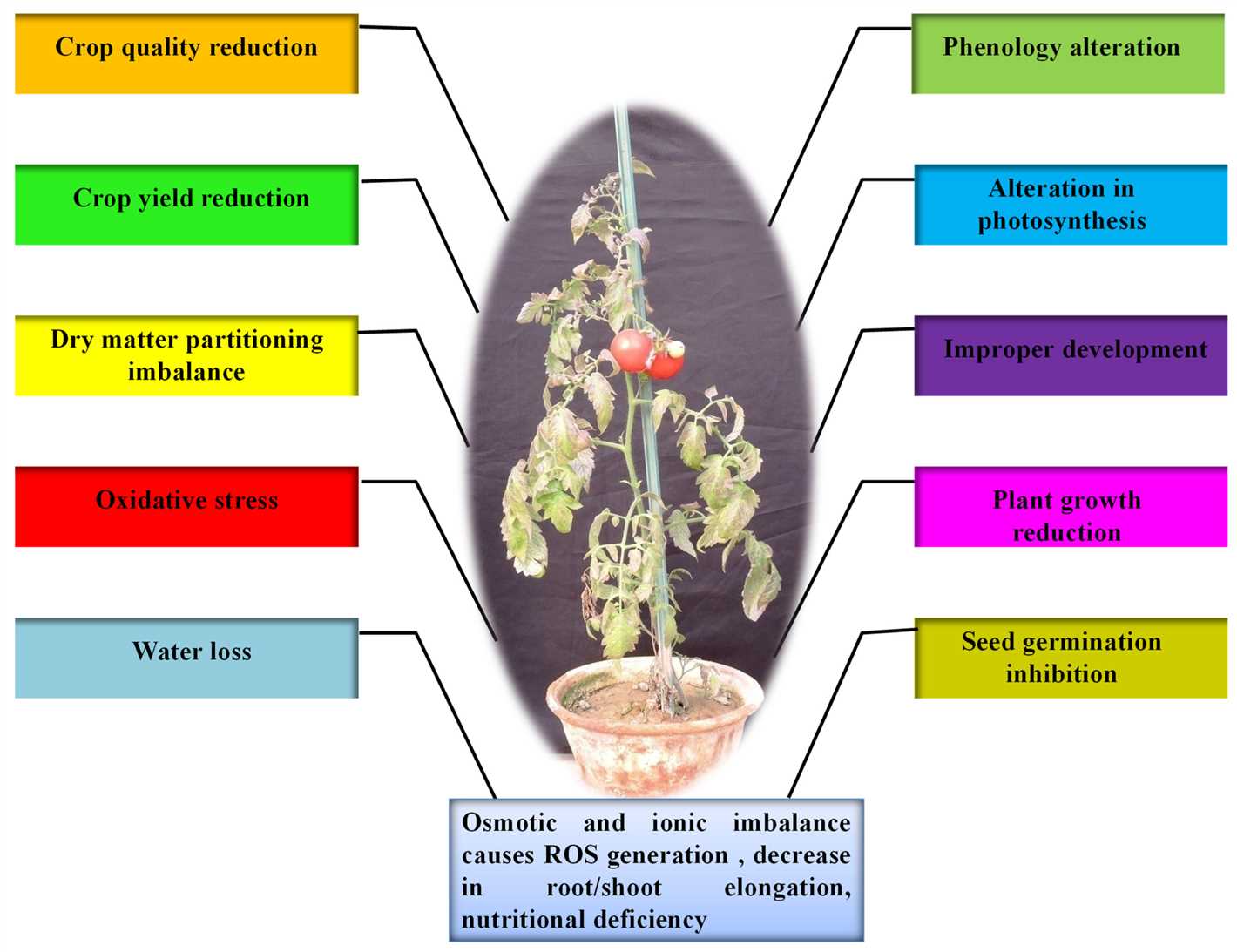
Select a bag that is large enough to accommodate multiple tomato seedlings. A bag with a capacity of 5-10 gallons is recommended, as it allows for proper root development and sufficient space for the plants to grow.
Step 2: Clean and Sanitize the Bag
Before using the bag, clean it thoroughly to remove any dirt or debris. You can rinse the bag with water or wipe it with a damp cloth. Additionally, sanitize the bag by spraying it with a mixture of water and mild soap or a diluted bleach solution. This helps eliminate any potential pathogens that could harm the plants.
Step 3: Create Drainage Holes
Next, create drainage holes in the bottom of the bag to prevent waterlogging. Use a sharp knife or scissors to make several small holes evenly spaced throughout the bottom surface of the bag. This allows excess water to drain away, preventing root rot and other water-related issues.
Step 4: Fill the Bag with Potting Soil
Fill the bag with high-quality potting soil, leaving about 2-3 inches of space at the top. The potting soil should be well-draining, loose, and rich in organic matter to provide the necessary nutrients for the tomato seedlings.
Step 5: Add Organic Fertilizer
To further enhance the soil fertility, add a slow-release organic fertilizer or compost to the potting soil. This will provide a continuous supply of nutrients to the tomato seedlings as they grow, ensuring healthy and robust plants.
Step 6: Moisten the Soil
Before planting the tomato seedlings, moisten the potting soil evenly. This will help create a favorable environment for the seeds to germinate and the seedlings to establish themselves. Avoid waterlogging the soil by ensuring that it is evenly moist but not wet.
Step 7: Arrange and Plant the Tomato Seedlings
Finally, arrange the tomato seedlings in the bag, spacing them appropriately to allow for proper growth. Gently remove each seedling from its container, loosen the roots slightly, and place it in the prepared hole in the potting soil. Press the soil gently around the roots to secure the seedlings in place.
Once the tomato seedlings are planted, you can proceed with the recommended methods to maximize yields, such as providing adequate sunlight, regular watering, and appropriate care.
Planting Tomato Seedlings in the Bag
Planting tomato seedlings in a bag is a simple and effective method to increase yields and maximize space in your garden. This method takes advantage of the natural properties of the bag to create a self-contained growing environment for your tomato plants.
Materials Needed:
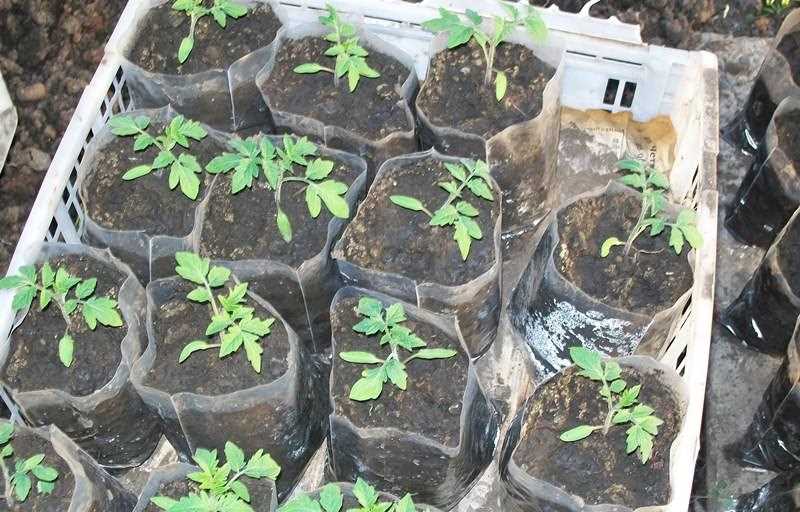
- A strong and durable bag, such as a grow bag or a reusable shopping bag
- High-quality potting mix
- Tomato seedlings
- Fertilizer
- Scissors or knife
- Water
Step 1: Prepare the Bag
Start by choosing a bag that is large enough to accommodate the root system of your tomato seedlings. Make sure the bag is clean and free from any holes or tears. Using scissors or a knife, cut several small drainage holes in the bottom of the bag to prevent water from pooling.
Step 2: Fill the Bag with Soil
Fill the bag with high-quality potting mix, leaving enough space at the top for planting your tomato seedlings. Gently pat down the soil to ensure it is evenly distributed and level.
Step 3: Plant the Tomato Seedlings
Dig small holes in the soil to accommodate the tomato seedlings. Carefully remove each seedling from its container, being mindful not to damage the roots. Place each seedling in a hole and gently firm the soil around it to secure it in place. Space the seedlings according to the recommended spacing for your specific tomato variety.
Step 4: Fertilize
Apply a slow-release fertilizer to provide your tomato plants with the necessary nutrients. Follow the instructions on the fertilizer packaging for the recommended amount and method of application.
Step 5: Water
Thoroughly water the tomato seedlings in the bag, ensuring that the soil is evenly moist without becoming waterlogged. Water regularly to keep the soil consistently moist throughout the growing season.
Step 6: Care and Maintenance
Maintain the health of your tomato plants by regularly monitoring for pests and diseases. Prune the plants as necessary to promote airflow and prevent overcrowding. Provide support for the plants, such as stakes or cages, to keep them upright as they grow.
Step 7: Harvest
When the tomatoes are fully ripe and ready for harvest, simply reach inside the bag and pluck them off the vine. Enjoy the bountiful harvest from your tomato seedlings grown in a bag!
Remember to follow best practices for tomato care, such as providing adequate sunlight, proper watering, and regular fertilization, to ensure the success of your tomato plants.
Caring for Bag-Grown Tomato Seedlings
Once you have successfully planted your tomato seedlings in a bag, it is important to provide them with the proper care to ensure healthy growth and a bountiful harvest. Here are some essential steps to follow:
1. Watering
Watering is crucial for the growth of tomato seedlings. Make sure to water the seedlings regularly, keeping the soil moist but not too wet. Overwatering can lead to root rot and other diseases. Water deeply, allowing the water to penetrate the entire root zone of the plants.
2. Fertilizing
Tomato seedlings require regular fertilization to support their growth. Use a balanced fertilizer or one specifically formulated for tomatoes. Follow the instructions on the fertilizer package for the recommended dosage and frequency of application. Apply the fertilizer evenly around the base of the seedlings and water it in well.
3. Staking
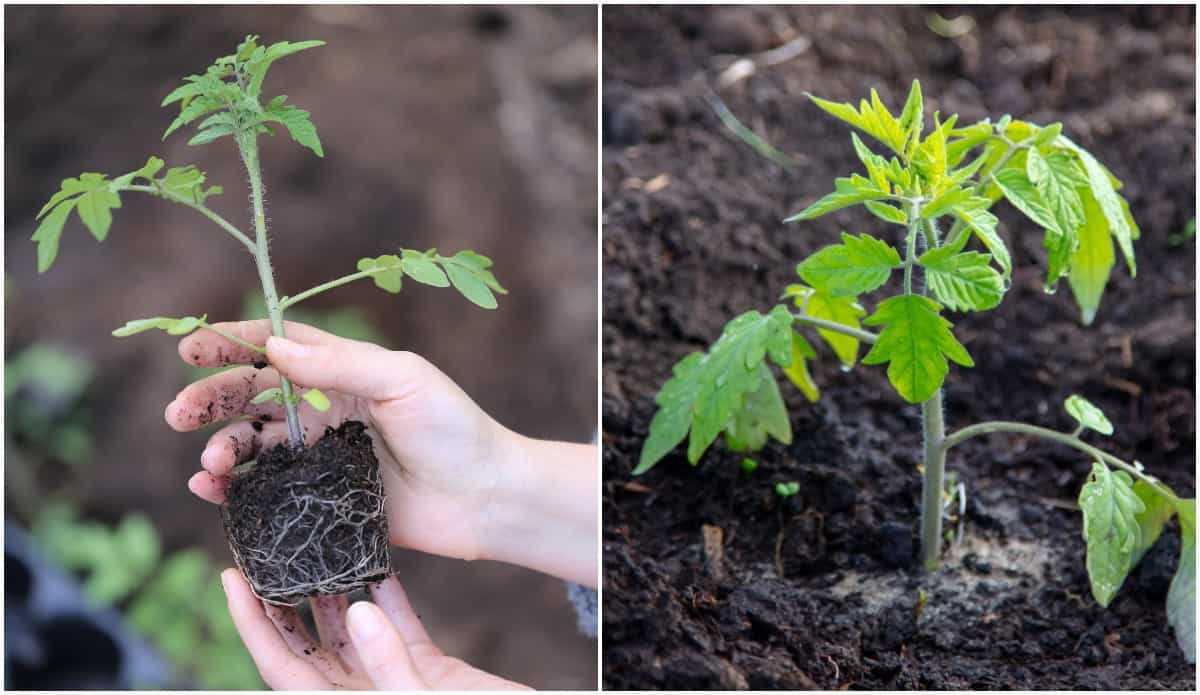
As the tomato plants grow, they will need support to keep them upright and prevent them from sprawling on the ground. Stake the seedlings using bamboo sticks or tomato cages. Secure the plants gently to the stakes as they grow taller to provide support to the stems and prevent them from bending or breaking.
4. Pruning
Regular pruning helps to improve air circulation and prevent diseases in tomato plants. Remove any suckers that develop in the leaf axils, as they can redirect energy away from fruit production. Also, remove any damaged or diseased leaves to promote a healthier plant.
5. Mulching
Mulching is beneficial for bag-grown tomato seedlings as it helps to conserve moisture, prevent weed growth, and maintain a more stable soil temperature. Apply a layer of organic mulch, such as straw or wood chips, around the base of the seedlings. Avoid piling the mulch directly against the stems to prevent rotting.
6. Pest and Disease Control
Monitor your tomato seedlings regularly for any signs of pests or diseases. Common pests include aphids, whiteflies, and tomato hornworms. Treat any infestations with organic pest control methods or insecticidal soaps. If you notice any signs of disease, such as wilting or yellowing leaves, take appropriate action by removing affected plants or treating them with fungicides.
7. Harvesting
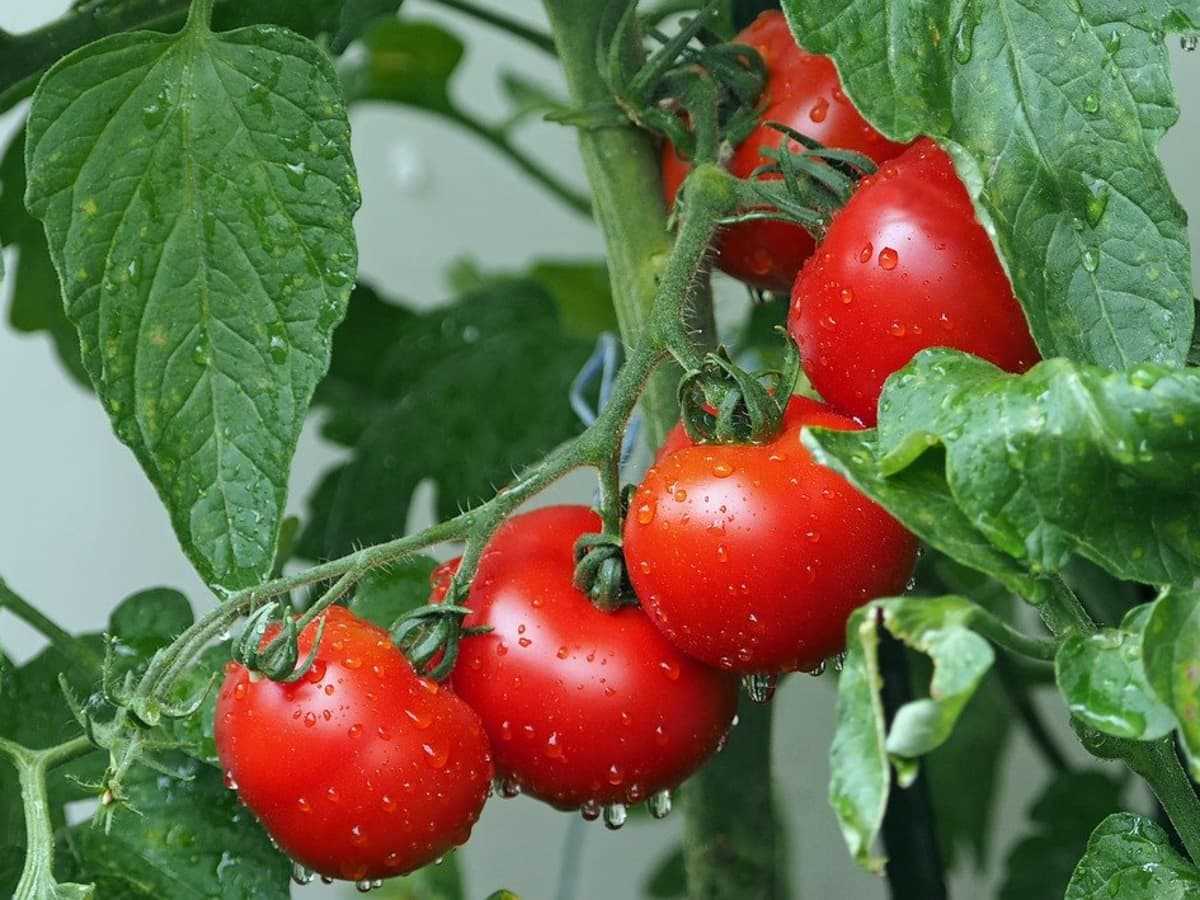
Once your bag-grown tomato plants have reached maturity, it’s time to start harvesting the ripe fruits. Gently pull or cut the tomatoes from the vine when they are fully developed and have reached their desired color. Enjoy the fresh, juicy tomatoes in your salads, sandwiches, or homemade sauces.
By following these care guidelines, you can ensure the healthy growth and abundant yield of your bag-grown tomato seedlings. Happy gardening!
Maximizing Tomato Yields with Bag-Grown Seedlings
Tomatoes are a popular and versatile vegetable that can be grown in gardens of all sizes. Whether you have a large backyard or a small balcony, using bag-grown tomato seedlings can help you maximize your tomato yields. This proven method has been used by gardeners to increase the productivity and health of their tomato plants.
Choosing the Right Bag
When selecting a bag for your tomato seedlings, it’s important to choose one that is sturdy and large enough to accommodate the roots of the plant. A bag with a capacity of at least 5 gallons is recommended. Additionally, make sure the bag has drainage holes to prevent waterlogged soil.
Selecting the Best Soil
The quality of the soil you use for your bag-grown tomato seedlings is crucial for their growth and productivity. A well-draining soil mix that is rich in organic matter works best. You can either purchase a commercial potting mix or create your own by combining equal parts compost, peat moss, and vermiculite.
Planting the Seedlings
Once you have your bag and soil ready, it’s time to plant the tomato seedlings. Dig a small hole in the soil, about the same depth as the seedling’s root ball. Gently remove the seedling from its container and place it in the hole. Fill the hole with soil, making sure to cover the roots completely.
Watering and Feeding
Proper watering and feeding are essential for healthy and productive tomato plants. Water your bag-grown seedlings regularly, keeping the soil consistently moist but not waterlogged. Fertilize your tomato plants with a balanced fertilizer every two weeks to provide them with the necessary nutrients for growth.
The Benefits of Bag-Grown Seedlings
- Bag-grown seedlings allow for better control over soil quality and drainage.
- The confined space of the bag promotes root development and prevents the spread of diseases.
- Bag-grown seedlings are portable and can be easily moved to optimize sunlight exposure.
- Using bags eliminates the need for traditional garden beds, making it a viable option for small spaces.
Maximizing Tomato Yields
To further increase your tomato yields, consider the following tips:
- Prune your tomato plants to remove suckers and promote better air circulation.
- Provide support for your plants using stakes, cages, or trellises to prevent them from sprawling on the ground.
- Regularly monitor and control pests and diseases to prevent damage to your plants.
- Harvest ripe tomatoes promptly to encourage the production of more fruit.
In Conclusion
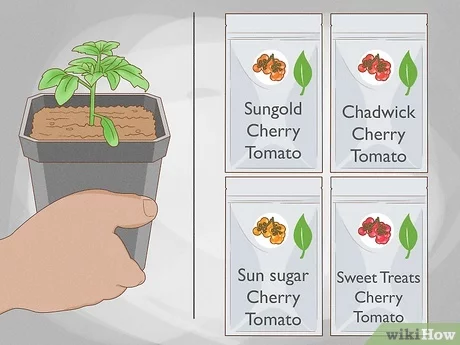
By using bag-grown seedlings and following the proper care and maintenance techniques, you can maximize the yields of your tomato plants. Whether you have limited space or want to experiment with a new gardening method, bag-grown tomato seedlings are a proven way to increase productivity and enjoy a bountiful harvest.
Harvesting and Storage Tips for Bag-Grown Tomatoes
Harvesting Tips
- Harvest tomatoes when they are fully ripened and have a deep color.
- Gently twist or snip the stem from the plant using pruning shears or scissors. Avoid pulling or tearing the fruit from the plant.
- Harvest tomatoes in the morning when they are at their juiciest and most flavorful.
- Check the tomatoes regularly for ripeness, as they can quickly overripen and become mushy.
Storage Tips
- Store freshly harvested tomatoes at room temperature, away from direct sunlight.
- Avoid refrigerating tomatoes unless they are overripe and need to be preserved for a longer period.
- If refrigeration is necessary, place the tomatoes in a brown paper bag or wrap them individually in newspaper before storing them in the refrigerator.
- Never store tomatoes near fruits that produce ethylene gas, such as bananas, as it can cause them to overripen and spoil faster.
Tips for Preserving Tomatoes
- If you have an excess of tomatoes, consider preserving them by canning or making tomato sauce, paste, or salsa.
- Freezing tomatoes is another option for preserving them. Blanch the tomatoes in boiling water for a few seconds, then submerge them in ice water. Once cooled, remove the skins and freeze the tomatoes whole or in slices.
- Drying tomatoes is a great way to preserve them. Slice the tomatoes and place them on a baking sheet. Sprinkle with salt and herbs, then bake them at a low temperature until they are dried and slightly crispy.
- For long-term storage, consider dehydrating tomatoes. Start by cutting the tomatoes into thin slices and placing them on a dehydrator tray. Set the dehydrator to a low temperature and let them dry until they are completely dehydrated.
Conclusion
By following these harvesting and storage tips, you can ensure that your bag-grown tomatoes remain fresh and flavorful for longer periods. Whether you choose to enjoy them immediately or preserve them for later use, these tips will help you make the most of your tomato harvest.
“Question-Answer”
What is the proven method to increase yields of tomato seedlings?
The proven method to increase yields of tomato seedlings is by growing them in a bag.
Why should I grow tomato seedlings in a bag instead of traditional methods?
Growing tomato seedlings in a bag has several advantages. It helps in creating a controlled environment, preventing diseases, and reducing the need for excessive watering and weeding.
How does growing tomato seedlings in a bag create a controlled environment?
Growing tomato seedlings in a bag allows you to control the soil composition, temperature, and moisture levels to provide the ideal conditions for their growth.
What are the steps to grow tomato seedlings in a bag?
The steps to grow tomato seedlings in a bag are as follows: 1) Fill a bag with a suitable potting mix. 2) Plant the tomato seeds at the recommended depth. 3) Water the bag regularly, keeping the soil moist but not waterlogged. 4) Place the bag in a sunny location or use grow lights. 5) Provide support for the tomato plants as they grow.
Can I use any bag to grow tomato seedlings?
You can use various types of bags, such as grow bags or even regular plastic bags with drainage holes, to grow tomato seedlings.
How long does it take for tomato seedlings to grow in a bag?
The time it takes for tomato seedlings to grow in a bag can vary, but on average, it takes around 4-6 weeks for them to reach a suitable transplant size.
What are some tips for successfully growing tomato seedlings in a bag?
Some tips for successfully growing tomato seedlings in a bag are: 1) Using a good quality potting mix. 2) Providing adequate amount of water and sunlight. 3) Pruning the plants when necessary. 4) Regularly monitoring for pests and diseases. 5) Transplanting the seedlings into larger containers or the garden when they are ready.







